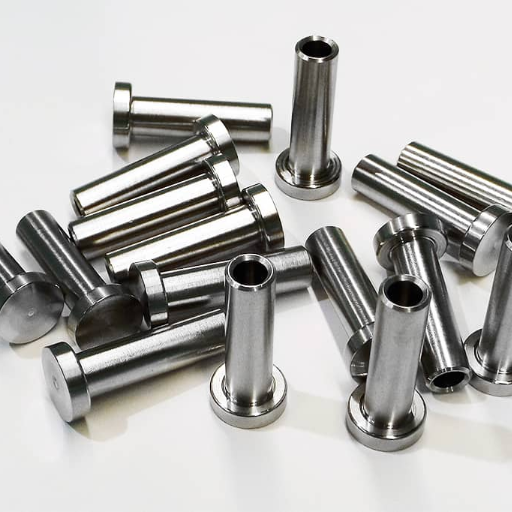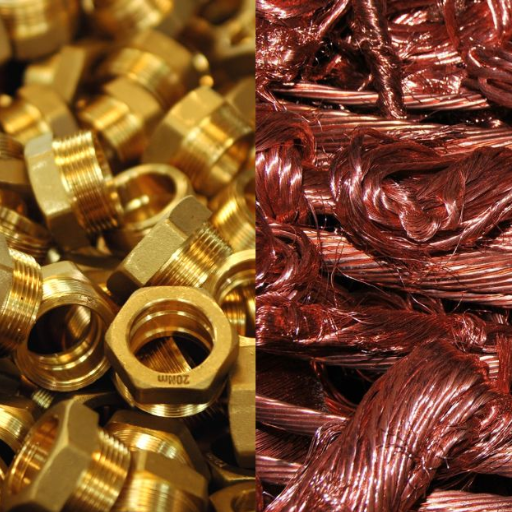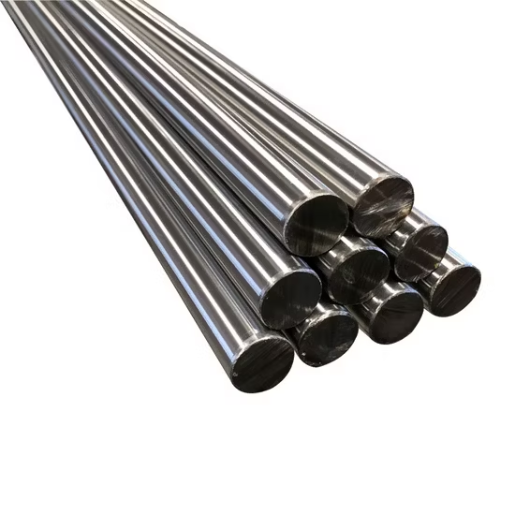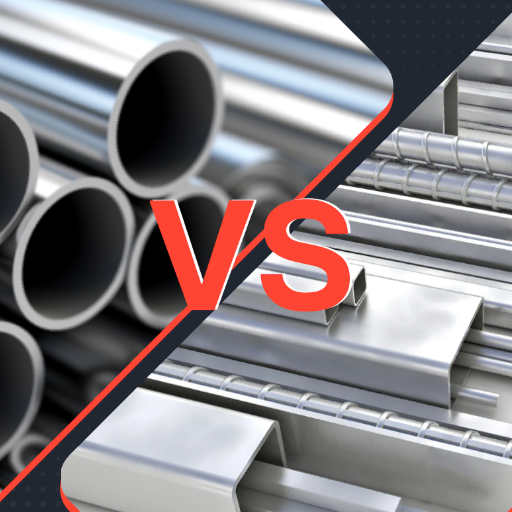In industries where material choice must traverse a hierarchy of issues regarding performance and durability, and ultimately cost, the choice between Hastelloy and stainless steel is very important. Both provide great strength and corrosion resistance, but each exhibits its own set of characteristics, thereby making it suitable for different environments and applications. Therefore, engineers, designers, and decision-makers need to understand what necessarily sets these two apart if their processes are to be optimized. This article puts forth a thorough comparison of these two alloys in terms of composition, properties, and performance characteristics, and the applications for which each is best suited, so that you can become an informed materials buyer.
Composition and Properties
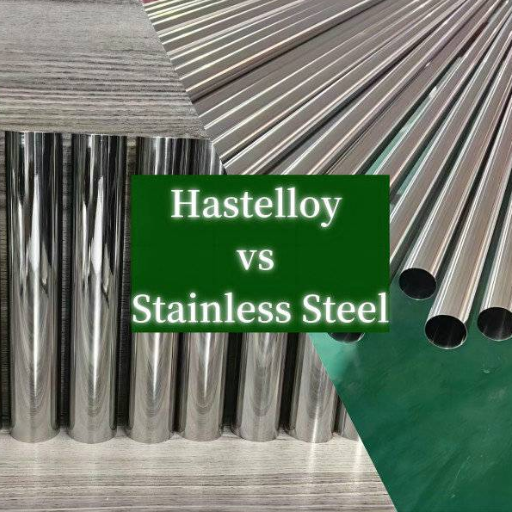
Based on composition, Hastelloys have mostly nickel with varying amounts of molybdenum, iron, and chromium depending upon the grade of the alloy. This composition confers excellent corrosion resistance; particularly in highly aggressive chemical environments, under both oxidizing and reducing conditions.
On the one side, stainless steel is practically iron with chromium (at least 10.5%) and maybe some nickel or manganese. This chromium develops a protective oxide coating that increases corrosion and staining resistance.
Differences in characteristics are mostly reflected in their compositions. Hastelloy provides the best resistance against pitting corrosion, stress corrosion cracking, and non-uniform corrosion, thus applied in chemical processing and marine operations. Stainless steel, while also providing corrosion resistance, is cheaper and more extensively used in construction, food processing, and medical engineering due to its characteristics of strength and finishing.
Chemical Composition of Stainless Steel
Stainless steel consists primarily of iron, chromium, and many times, nickel, while certain grades carry other elements such as molybdenum, manganese, and carbon. Chroming, in amount not less than 10.5%, is the principal element for corrosion resistance of stainless steel as an oxide layer formed on the surface produces the protecting layer for the underlying material. Nickel is often added to stabilize the austenitic structure and enhance mechanical properties, while molybdenum improves resistance to pitting and crevice corrosion, particularly in chloride-rich environments.
Carbon is generally kept to a low level, for an excessive amount could embed resistance by promoting the formation of chromium carbide. Modern-day stainless steel alloys are designed on the basis of exact proportions of elements to meet various performance criteria in different industries for providing the best strength, resistivity, and durability in distinct operational conditions.
Hastelloy Alloy Composition
The composition in these alloys varies, with primarily nickel making up the bulk and molybdenum, iron, chromium, cobalt, and tungsten in the mixture. These elements, in a balanced state, grant the alloy the ability to resist very severe chemical environments, including oxidizing or reducing agents. Molybdenum is essential in increasing resistance against localized corrosion, such as pitting and crevice corrosion. Chromium gives protection against oxidation and allows for a bigger range of application for the alloy under oxidizing circumstances, whereas tungsten strengthens it further against corrosion and mechanical stress.
Hastelloy, with its marvelous low carbon content, does not form carbides, even during welding; while heat-affected zones are generated, the material retains its corrosion resistance. This property makes it fit for chemical processing at extreme conditions. A few examples of such operations include in reactors, heat exchangers, and storage vessels. The ability to withstand high temperatures and aggressive chemicals makes Hastelloy indispensable in aerospace, marine engineering, and chemical-processing industries.
Physical Properties of Hastelloy vs Stainless Steel
|
Property |
Hastelloy |
Stainless Steel |
|---|---|---|
|
Corrosion Resistance |
Exceptional, even in harsh chemicals |
High, but less effective in extreme conditions |
|
Temperature Tolerance |
Withstands temperatures up to 1200°F (649°C) |
Typically up to 1500°F (815°C), varies by grade |
|
Strength-to-Weight Ratio |
High |
Moderate |
|
Durability |
Resistant to cracking and pitting |
Resistant to wear and oxidation |
|
Weldability |
Excellent, minimal cracking |
Very good with proper techniques |
|
Cost |
Expensive, premium-priced alloy |
Lower cost, widely available |
|
Density |
~8.64 g/cm³ |
~7.9 g/cm³ |
|
Thermal Conductivity |
Lower than stainless steel |
Higher, varies by type and grade |
|
Magnetic Properties |
Non-magnetic |
Some grades are slightly magnetic |
|
Ease of Fabrication |
More difficult to machine |
Easier to cut and machine |
|
Longevity in Harsh Conditions |
Superior |
Shorter lifespan compared to Hastelloy |
|
Applications |
Aerospace, chemical processing, marine |
Construction, automotive, medical equipment |
Benefits and Disadvantages
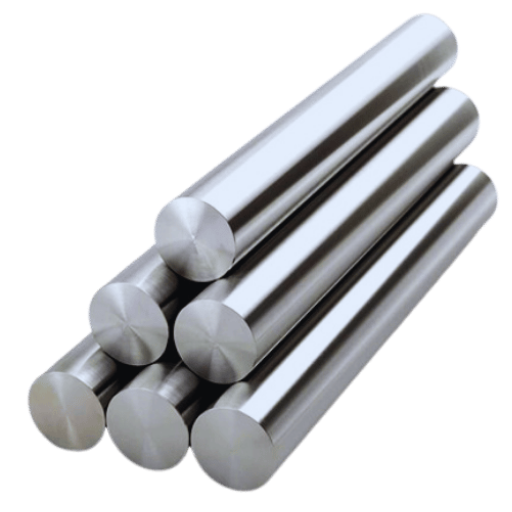
Benefits:
- Hastelloy: One of the main rationales for using Hastelloy is the imperviousness to corrosion in the aggressive chemical environment, suitable for aerospace and marine environments, with a longer life-span in harsh conditions and maintenance of structural integrity under very few extremes of temperature.
- Stainless Steel: Stainless steel is more versatile and easier to fabricate. It is commonly available, inexpensive, and is used for numerous applications where excellent thermal conductivity is required.
Disadvantages:
- Hastelloy is costly and hard to machine and thus aggregates costs and difficulties in production.
- Stainless Steel is less resistant to severe chemical corrosion, and it has a shorter lifespan when highly aggressive environments confront it compared to that of Hastelloy.
Advantages of Using Hastelloy
- Exceptional Corrosion Resistance: It resists strong under corrosive agents-Hastelloy fitting the bill for harsh chemical environments, for instance. Thus, it may do well in hydrochloric acid, sulfuric acid, and chlorine gas environments while other metals like stainless steel may deteriorate quickly.
- High Thermal Stability: It maintains its structural integrity and mechanical properties under extreme temperatures, often exceeding 1200°F (649°C). This characteristic makes it suitable for applications in heat exchangers, reactors, and high-temperature chemical processes.
- Superior Weldability: Hastelloy can be welded without cracking or great reduction of corrosion resistance so it is dependable in structural components and process equipments exposed to severe conditions.
- Resistance to Pitting and Crevice Corrosion: Its unique chemical composition that includes high levels of molybdenum and nickel affords Hastelloy excellent resistance against pitting and crevice corrosion, which is of importance in marine and chemical processing applications.
- Longevity in Aggressive Media: Durable in high aggressive media resulting in fewer replacements or maintenance and, eventually, life-cycle costs. As an example, in continuous exposure with concentrated acids, Hastelloy has been noted to perform much longer than stainless steel.
Limitations of Hastelloy
- Cost: Being a rather costly material, compared to other corrosion-resistant alloys such as stainless steel and some aluminum alloys, it loses some of its market share, especially in the procurement of relatively budget-sensitive projects. Raw material prices of Hastelloy can go for 50% to 70% more when compared to regular stainless steel.
- Machinability: Its machining is hindered by its high strength and toughness. Special tooling and methods are used for manufacturing resulting in higher complexity and price in fabrication. As an example, machining speeds are generally reduced from 20 to 30 percent versus the speeds accepted for normal steels so that undue wear to the tooling may be avoided.
- Weldability: Hastelloy can be welded using modern techniques, but wrong welding methods may cause defects such as porosity or reduced corrosion resistance in heat-affected zones, necessitating highly skilled labor and precise control of heat input during welding.
- Weight: With a density of around 8.9 g/cm³, it may be regarded as too heavy for applications where weight is sensitive, such as in aerospace and automobile industries.
- Availability: Some grades of Hastelloy are not as commercially available as some alloys, and hence long lead times for procurement may be faced, especially for those in custom sizes or shapes.
Pros and Cons of Stainless Steel
Pros:
- Corrosion Resistance: Stainless steel tends to resist corrosion and oxidation to perform well in many environments exposed to moisture, chemical, or high temperature. This characteristic is mainly contributed to by chromium, which forms a passive oxide layer, self-healing.
- Durability: Stainless steel gives out excellent mechanical power and lasts even in a challenging atmosphere. It puts up resistance to wear and tear, deformation, and impact-all of which could have negatively affected its structural integrity had it been left unattended for years.
- Hygienic Properties: The non-porous surface of stainless steel makes it suitable for use in any food processing, medical, and pharmaceutical applications corresponding to ease of cleaning and resistance to bacterial growth.
- Aesthetic Appeal: Thus, stainless steel forms an important material in architecture and design for functional and aesthetic purposes.
- Recyclability: This steel can be recycled completely, thus supporting sustainable manufacturing of other materials.
Cons:
- Cost: Stainless steel is by and large more expensive when compared with other materials like carbon steel due to its manufacture and composition.
- Thermal Conductivity: It possesses a relatively low thermal conductivity by comparison with other metals and such low conductivity may lead to the realization of not-suitable criteria required for particular heat transfer operations.
- Work Hardening: Stainless steel hardens during machining and thus poses a problem during manufacturing, requiring special tools and techniques, which thereby increase production time and cost.
- Weight: Stainless steel is much heavier than in aluminum and other materials that hinder its practicality in weight conscious applications such as aerospace.
- Susceptibility to Chloride Stress Cracking: Under specific conditions, mainly in environments with a high concentration of chloride, stainless steel will be susceptible to stress corrosion cracking, which limits its use in industrial applications.
Cost Comparison
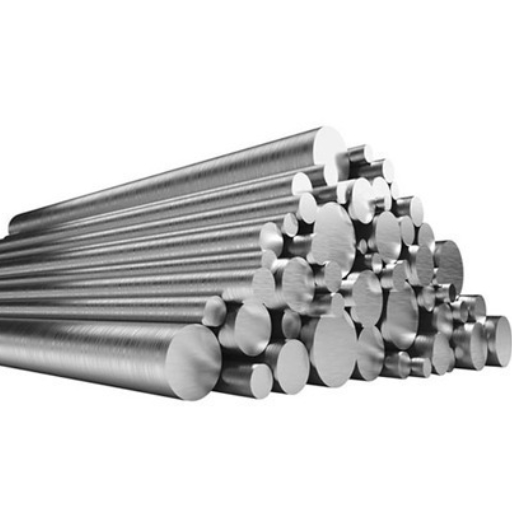
Stainless steel’s pricing is generally above that of aluminum or carbon steel because of the specific nature and processes through which it is manufactured. In this regard, the heightened presence of alloying elements, chiefly chromium and nickel, adds to stainless steel’s high production cost. However, softer stainless steel, with its adequate resistance against environmental factors, would definitely make conscious engineers weigh the value of stainless steel over maintenance beyond superficial prices. Hence, higher initial costs can lead to stainless steel being a cheap source in the long run for applications requiring durability and minimal maintenance.
Price Analysis of Hastelloy vs Stainless Steel
When discussing the cost structure of Hastelloy against stainless steel, numerous factors have to be taken into consideration: raw material composition, manufacturing complexity, and the demands of the specific set of applications for which the material is intended. Hastelloy, principally a nickel alloy with variable quantities of molybdenum, iron, and chromium, is much costlier than stainless steel. An increased cost is mainly due to the high nickel content and the precision demanded in the manufacturing processes to guarantee excellent resistance to highly corrosive chemical environments.
Stainless steel remains somewhat cheaper despite containing moderate percentages of nickel and chromium, since its mass production and relatively easy adaptability to less corrosive environments bring about its cost-effectiveness. For applications in chemical processing where true corrosion resistance is demanded, the added cost of Hastelloy is justified by its proven ability to come through; whereas, for less aggressive conditions, stainless steel is a cheaper alternative while giving a very good account for itself in terms of durability and abrasion resistance.
Price comparisons from recent studies indicate that, depending on the grade and prevailing market conditions, prices for Hastelloy materials are generally two to five times that of top-grade stainless steel. Hence, one should consider the environment and the demands on the material when determining the timely and material cost efficiency of its use.
Long-term Cost Considerations
Industry-Specific Applications
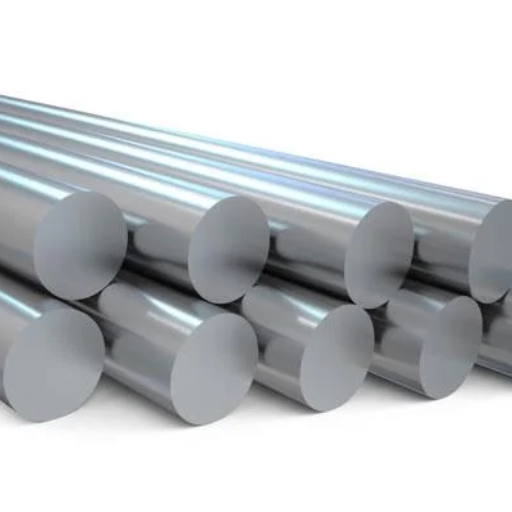
Hastelloy finds tough and important applications across a number of finer industrial fields for obvious reasons: extremely corrosion-resistant and mechanical properties.
- Chemical Processing: Used extensively in reactors, heat exchangers, and columns that are subjected to very aggressive chemicals such as hydrochloric acid so that its short falls in durability result in minimum downtime.
- Aerospace Engineering: Hastelloy parts find applications in jet engines and exhaust units where high-temperature stability is required for operational stability.
- Marine Engineering: It is a superb alloy that stands against pitting and crevice corrosion arising from seawater environments, therefore also being highly suitable for offshore platforms, subsea, and marine equipment.
These applications stand for conditions where long-term reliability of the Hastelloy is envisaged.
Applications in Chemical Processing
- Heat Exchangers
The heat exchangers are typical applications where Hastelloy would be employed, being subjected to events of corrosive fluids and extreme temperatures. Being resistant to thermal stress corrosion cracking will prolong the service life of such components beyond 1100°F (593°C).
- Reactors and Pressure Vessels
It is used in chemical reactors and pressure vessels in highly acidic or oxidizing solutions of sulfuric acid, hydrochloric acid, and nitric acid. This reduces maintenance and improves processing.
- Piping and Tubing
The Hastelloy pipes and tubes are used for the transfer of highly corrosive chemicals, hence reducing the risk of failure caused by pitting, crevice corrosion, or erosion. These find widespread use in production lines dealing with chlorides, hypochlorites or other aggressive agents.
- Distillation Towers
Hastelloy alloys are applied in distillation towers for the separation of mixtures that are either volatile or reactive to one another. These alloys arrange to retain the operational integrity amid the diverse processing environment with the resistance from chemical attacks and thermal cycling.
- Scrubber Systems
One of the most important pollution control applications are those of the scrubber systems utilizing Hastelloy for neutralizing harmful emissions such as sulfur dioxide and particulate matter. Their high degree of corrosion resistance ensures the scrubbers’ performance in wet or acidic conditions without the corrosion of the material itself.
Use in Aerospace and Marine Environments
Due to the resistance displayed by the Hastelloy alloys to oxidation, stress corrosion cracking, and high-temperature environments, these alloys have found applications in aerospace and marine industries. In the suite manufacturing of turbine blades, exhaust ducts, and heat exchangers, these alloys are considered by aerospace companies where absolute assurance of performance in extreme thermal and mechanical conditions is essential. Because of its resistance capacity, the Hastelloy also ensures the well-being and efficiency of high-pressure and high-temperature environments acting as a service.
In marine environments, Hastelloy is resistant to pitting and crevice corrosion and is thus one of the preferred materials for subsea infrastructures, chemical containment, and seawater desalination plant components. This special resistance of Hastelloy against saline water and its remarkable structural integrity under extreme conditions mitigate vegetation of risk associated with equipment failure and maintenance. Hence, the alloy still fronts both industries for safer and efficient designs.
Choosing the Proper Material
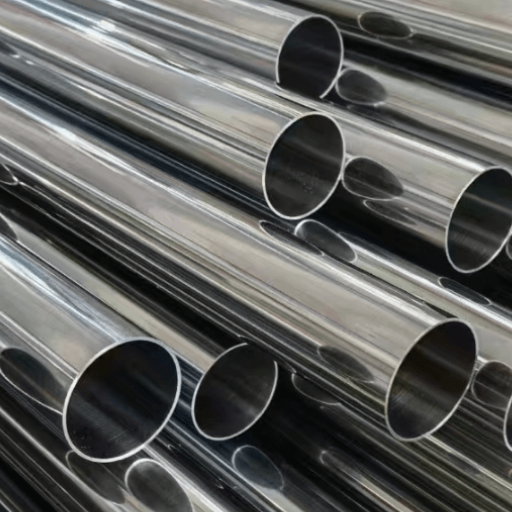
Guidelines for Choosing Between Hastelloy and Stainless Steel
- Corrosion Resistance: Famous for Hastelloy corrosion resistance to highly oxidizing and reducing agents, it is, therefore, one of the most suitable materials for chemical processing environments or applications involving highly corrosive substances, like sulfuric and hydrochloric acids. Stainless steel is also said to possess good corrosion resistance, but under extreme or abrasive chemical environments, it falls short in comparison to Hastelloy in several instances.
- Temperature Tolerance: Maintains the structural integrity of the material under towering temperatures and guarantees appropriate compatibility for heat exchangers, reactors, and high-temperature chemical environments. Stainless steel handles moderately high temperatures, but in the longer periods of extremely high-temperature applications, it loses strength or gets scaling.
- Mechanical Strength: Applications with a more significant load have high-performance requirements, such as high load construction and high-pressure systems. Thus, certain grades of stainless steel can counter with Hastelloy in terms of strength and durability, like duplex or martensitic. In general, though, Hastelloy’s considerably better fatigue resistance gives it its upper hand in more demanding scenarios.
- Environment and Application-Specific Needs: In marine environments or processes with chloride ions, resistance from pitting and crevice corrosion could be the most important point for the application of Hastelloy. Conversely, stainless steel, especially austenitic grades, will be inexpensive and easy to clean for food-grade or sanitary applications.
- Cost Efficiency: Due to the unusual composition with a relatively high amount of nickel and molybdenum, Hastelloy is much more expensive than stainless steel. On the other hand, in situations of less demand, stainless steel can serve as the less costly but yet reasonably reliable option.
Conclusion: Making an Informed Decision
Reference Sources
1. The Corrosion Wear Behaviors of Hastelloy C276 Alloy in Seawater:
- Hastelloy C276 exhibits superior corrosion resistance compared to AISI 316 stainless steel in seawater.
- The wear loss of Hastelloy C276 is higher in seawater than in distilled water due to the synergistic effects of corrosion and wear.
- Maximum corrosion rate occurs in 3% seawater salinity.
2. Selection of Inhibited Preservative Materials for Corrosion Protection:
- Hastelloy C276 and Monel 400 show high corrosion resistance in oil processing environments containing chlorides and sulfur compounds.
- Local corrosion in level transmitter torque tubes is influenced by design features like stagnant zones and alternate stresses.
- A 5% solution of M-1 inhibitor in silicone oil effectively protects structural materials from corrosion.
- Laser cladding improves wear resistance and mechanical properties of rail materials.
- Hastelloy and stainless steel are among the materials used for cladding, with Hastelloy showing superior performance in extreme conditions.
- The microstructure and hardness of cladded layers depend on process parameters like laser power and scanning speed.
Frequently Asked Questions (FAQs)
Q: What is the difference between Hastelloy and stainless steel?
A: The primary difference between Hastelloy and stainless steel lies in their composition and properties. Hastelloy is a nickel-based alloy, primarily composed of nickel, which provides superior corrosion resistance compared to standard stainless steel products. While stainless steel is an iron-based alloy, often containing varying levels of chromium and nickel, Hastelloy alloys like Hastelloy C-276 and Hastelloy C-22 are engineered for extreme environments where corrosion resistance is critical. This makes Hastelloy a better choice for applications in chemical processing and aerospace industries where durability is essential.
Q: How does Hastelloy perform in extreme environments compared to stainless steel?
A: Hastelloy is designed for better performance in extreme environments than standard stainless steel. The nickel-based composition of Hastelloy allows it to withstand severe conditions, including high temperatures and aggressive chemical exposures. In contrast, while 316 stainless steel offers good resistance to corrosion, it may not hold up as well under the same harsh conditions. Hastelloy’s higher nickel and molybdenum content enhances its resistance to pitting and stress corrosion cracking, making it more suitable for demanding applications.
Q: What are the benefits of Hastelloy compared to stainless steel?
A: The benefits of Hastelloy over stainless steel are numerous, particularly in terms of corrosion resistance. Hastelloy alloys exhibit superior performance in aggressive chemical environments, thus reducing maintenance costs and downtime. While stainless steel is often chosen for its cost-effectiveness and availability, Hastelloy provides long-term reliability in critical applications, such as in the oil and gas industry. Moreover, Hastelloy’s unique properties, including its ability to resist oxidation and high-temperature strength, make it a preferred material for specialized applications.
Q: What are the characteristics of Hastelloy compared to stainless steel grades?
A: Hastelloy is known for its exceptional resistance to corrosion and high-temperature stability, which are significant characteristics that distinguish it from various grades of stainless steel. For instance, while 304 stainless steel is commonly used due to its good corrosion resistance, it cannot match the performance of Hastelloy C-276 or Hastelloy X in harsher environments. The chemical composition of Hastelloy, with its high content of nickel and molybdenum, provides enhanced durability and strength, especially in applications that involve exposure to harsh chemicals.
Q: How do the chemical compositions of Hastelloy and stainless steel affect their applications?
A: The chemical compositions of Hastelloy and stainless steel significantly impact their applications. Hastelloy is a superalloy primarily composed of nickel, which gives it outstanding resistance to corrosion and oxidation in demanding environments. In contrast, stainless steel typically contains iron, chromium, and sometimes nickel, which can limit its performance in aggressive chemical settings. This difference in composition means that Hastelloy is often used in applications like chemical processing and petrochemical industries, whereas stainless steel is more commonly found in less demanding environments, such as kitchen equipment and construction materials.


